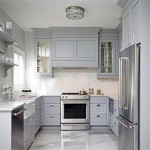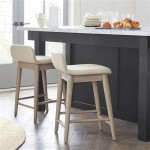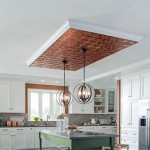Black And White Marble Kitchen Countertops: A Timeless Elegance
Black and white marble kitchen countertops represent a classic design choice that transcends fleeting trends. The contrasting colors create a visually striking aesthetic, adaptable to various kitchen styles, from minimalist modern to traditional and ornate. This enduring appeal arises from the inherent beauty of marble, combined with the dramatic interplay of light and dark offered by the contrasting palette.
The decision to incorporate black and white marble into a kitchen design involves several considerations, spanning aesthetics, functionality, and maintenance. Understanding the nuances of different marble types, the impact of varying patterns, and proper care techniques is crucial for achieving a satisfying and long-lasting result.
Aesthetic Versatility and Design Impact
Black and white marble countertops offer exceptional design flexibility. The contrast can be subtle, with predominantly white marble featuring delicate black veining, or boldly dramatic, with large swathes of black marble offset by crisp white accents. This variability allows for seamless integration into diverse kitchen layouts and color schemes.
When considering the overall aesthetic, it’s important to evaluate the existing elements within the kitchen. Dark cabinetry paired with white marble countertops can create a sophisticated and high-contrast look. Conversely, light-colored cabinetry combined with black marble countertops provides a grounding effect and prevents the space from feeling overly sterile. Stainless steel appliances and hardware tend to complement both variations, adding a modern and clean visual appeal.
The veining pattern of the marble significantly influences the final appearance. Bold, dramatic veining introduces a sense of movement and energy, while subtle, delicate veining creates a more refined and understated ambiance. The size and orientation of the kitchen also factor into the choice of veining pattern. In smaller kitchens, finer veining might be preferable to avoid overwhelming the space. In larger kitchens, bolder patterns can be used to establish focal points and add visual interest.
The finish of the marble, whether polished, honed, or leathered, further impacts the aesthetic. Polished marble offers a high-gloss, reflective surface that enhances the contrast between the black and white elements, creating a luxurious and sophisticated feel. Honed marble provides a matte finish, reducing glare and offering a softer, more understated look. Leathered marble features a subtle texture that adds depth and character, providing a more tactile experience.
Types of Marble and Their Characteristics
Various types of marble exhibit black and white coloring, each with unique characteristics that influence its suitability for kitchen countertops. Understanding these variations is essential for making an informed decision.
Carrara marble, known for its subtle gray veining on a white background, can sometimes feature darker, almost black, veins. While not strictly "black and white," the contrast can be sufficient to create a visually appealing countertop. Carrara marble is a popular choice due to its relatively lower cost compared to other marble varieties.
Statuario marble is a highly prized variety characterized by its bright white background and bold, dramatic gray or black veining. This marble is often used in high-end kitchens due to its striking appearance and luxurious feel. However, Statuario marble is generally more expensive and may require more careful maintenance due to its porous nature.
Nero Marquina marble is a striking black marble with distinct white veining. This option creates a dramatic and sophisticated look, particularly when paired with white cabinetry or backsplash. Nero Marquina is relatively hard and durable compared to other marble varieties, but it still requires proper sealing and care to prevent staining and etching.
Calacatta marble, another premium option, features a white background with thick, bold veins that can range in color from gold to gray to black. Calacatta marble is prized for its rarity and dramatic appearance, making it a statement piece in any kitchen. Like Statuario, it is generally more expensive and requires careful maintenance.
When selecting a specific type of marble, it's crucial to examine slabs in person to assess the veining pattern, color variations, and overall quality. Natural stone variations are inherent in marble, so choosing a slab that aligns with the desired aesthetic is paramount.
Maintenance and Durability Considerations
Marble, while undeniably beautiful, is a relatively soft and porous stone, requiring specific maintenance practices to preserve its appearance and prevent damage. Understanding these requirements is crucial before committing to marble countertops.
Sealing marble countertops is an essential step in protecting them from stains and etching. A high-quality penetrating sealer should be applied upon installation and reapplied periodically, typically every six to twelve months, depending on the usage and porosity of the specific marble type. The sealer creates a barrier that prevents liquids from being absorbed into the stone, reducing the likelihood of staining.
Prompt cleanup of spills is crucial. Acidic substances, such as lemon juice, vinegar, and tomato sauce, can etch the marble surface, leaving dull marks. Even seemingly harmless liquids like coffee and wine can stain if left unattended. Using a soft cloth and a pH-neutral cleaner specifically designed for natural stone is recommended for cleaning spills and daily maintenance.
Avoid using abrasive cleaners or scouring pads on marble countertops, as these can scratch the surface. Cutting directly on marble is also discouraged, as it can lead to scratches and chipping. Using cutting boards is essential to protect the countertop surface.
Consider the potential for patina development. Over time, marble can develop a natural patina, which is a subtle change in the surface appearance due to wear and tear. Some individuals appreciate this natural aging process, as it adds character to the stone. However, others may prefer to maintain a pristine appearance, requiring more diligent cleaning and maintenance practices.
Edge profiles can also impact the durability of marble countertops. Rounded edges are less prone to chipping than sharp edges. Opting for a softer edge profile can help protect the countertop from damage.
While marble requires more maintenance than some other countertop materials, such as quartz or granite, its inherent beauty and timeless appeal make it a worthwhile investment for those willing to commit to proper care. The resulting aesthetic, a blend of sophistication and natural elegance, is difficult to replicate with synthetic materials.
In conclusion, selecting black and white marble kitchen countertops requires careful consideration of aesthetic preferences, marble types, and maintenance requirements. A thoughtful approach to these factors will ensure a beautiful and enduring addition to any kitchen design.

Luxury Stone Black And White Marble Kitchen Countertop

Marble Countertops Ideas For Kitchen Designcafe

Marble Countertops A Hit Or Miss For Your Kitchen Architecture

The Beauty Of Black And White

Giani Belgotta Black Marble Countertop Paint Kit

Honed Black Marble Kitchen Countertop Design Ideas

Marble Stone Countertop Surface White Black Kitchen Island Cabinet Vanity Restaurant Tiles
Super White Marble Countertops

Honed Black Marble Kitchen Countertop Design Ideas

White Marble Countertops Royalstonetrading
See Also








